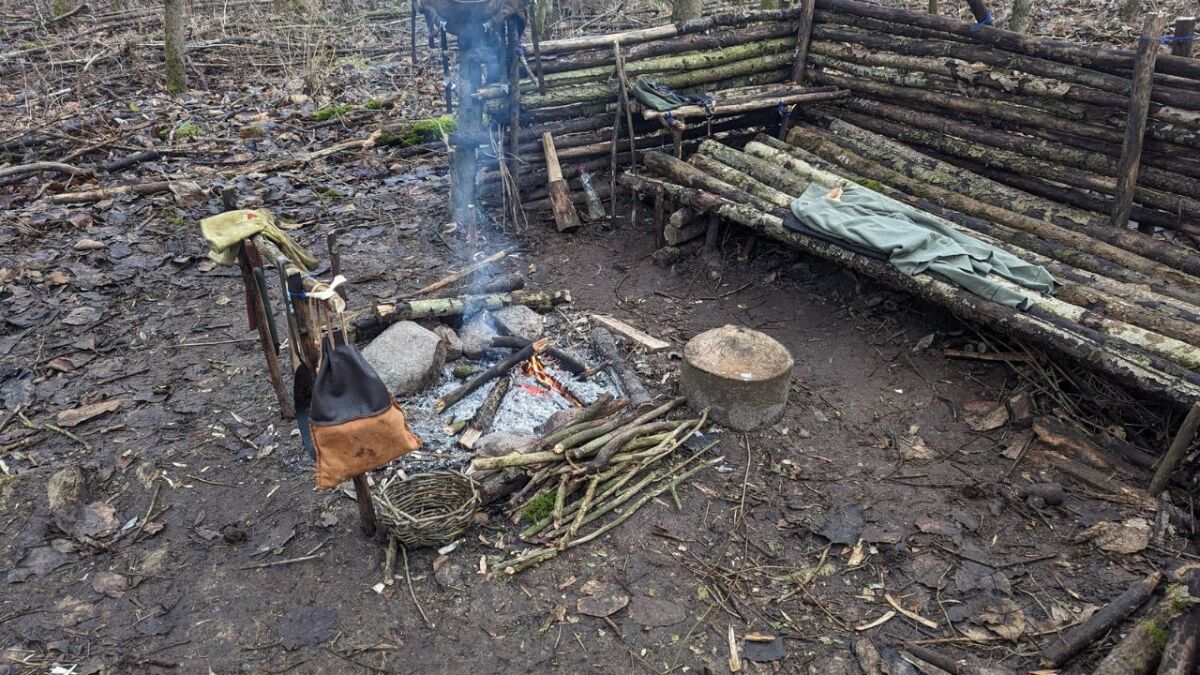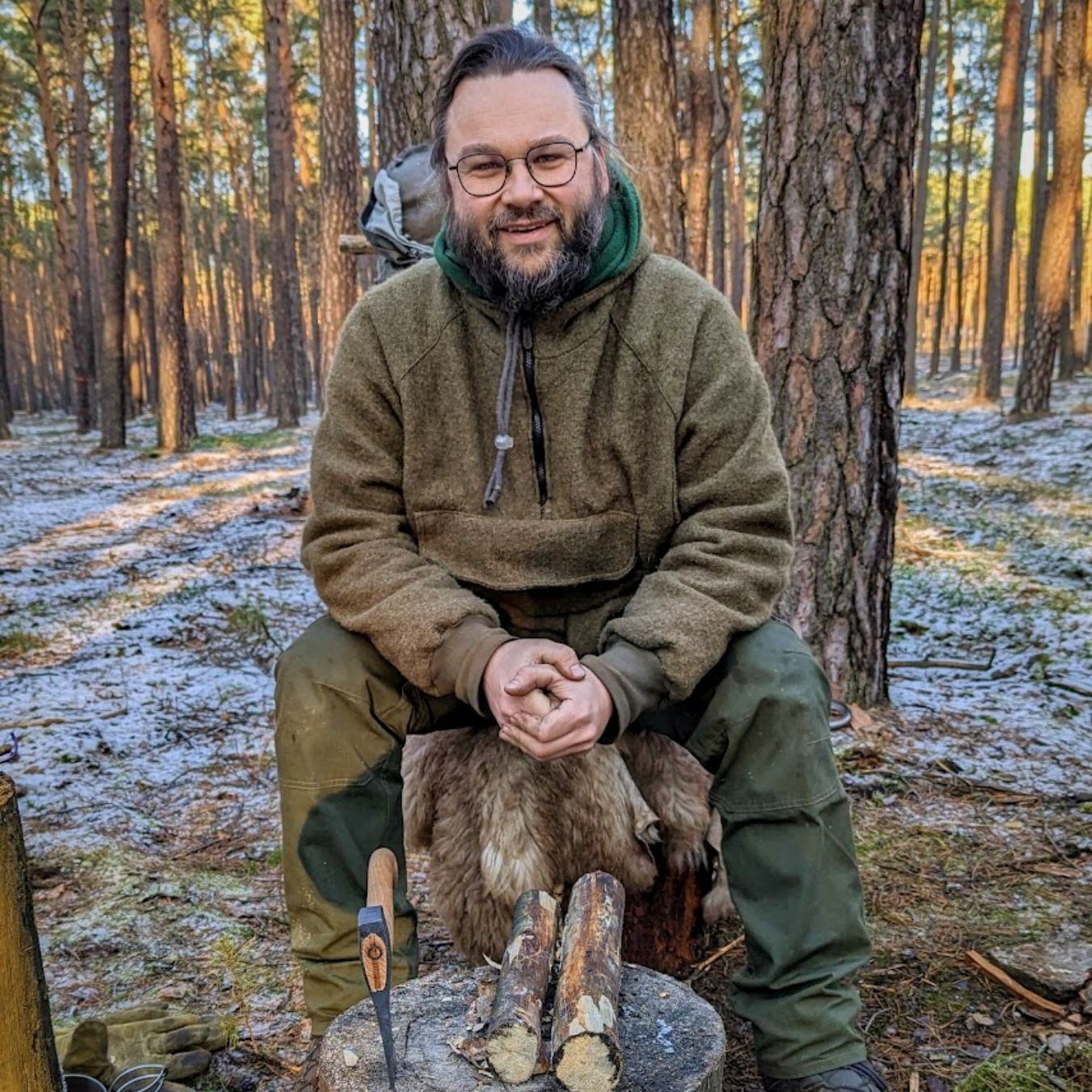
fireplace
Noun
Meaning
A fireplace is a designated area in the outdoors where a fire can be safely built and maintained. It serves as a crucial element in survival, bushcraft, and camping activities, providing warmth, light, and a means to cook food. In the wild, a fireplace is typically constructed using rocks or logs to contain the fire and prevent it from spreading. It is essential to choose a suitable location for a fireplace, considering factors such as wind direction, proximity to flammable materials, and the availability of firewood. Building and maintaining a fireplace responsibly is a fundamental skill for outdoor enthusiasts.

Examples
„I love sitting by the fireplace on a cold winter night, it creates such a cozy and warm atmosphere.“
„After a long day of hiking, we gathered around the fireplace to cook our dinner and share stories of our adventures.“
„When camping in the wilderness, a fireplace is essential for cooking, providing warmth, and keeping away predators.“
„I always make sure to build a proper fireplace when I go camping, using rocks and logs to create a safe and efficient fire pit.“
„The crackling sound of the fire in the fireplace is so soothing, it helps me relax and unwind after a long day in nature.“
Origin
The word "fireplace" originates from the Old English word "fȳrplece," which is a combination of "fȳr" meaning "fire" and "plece" meaning "place." The concept of a designated area for containing and controlling fire has been present in human history for thousands of years.
Fireplaces have their roots in ancient civilizations, where they were used for both practical and social purposes. In ancient Rome, for example, fireplaces called "focus" were commonly found in homes and served as a central gathering place for cooking, heating, and socializing.
Over time, fireplaces evolved in design and functionality. In medieval Europe, they became more elaborate and decorative, with ornate mantels and chimneys. The invention of the chimney allowed for better ventilation and improved smoke control.
In the 18th and 19th centuries, fireplaces became a symbol of wealth and status, with grand designs and intricate craftsmanship. However, with the advent of central heating systems in the 20th century, fireplaces gradually lost their primary role as a source of heat and became more of a decorative feature in many homes.
Today, fireplaces are still cherished for their cozy ambiance and the comforting warmth they provide. They have also become popular in outdoor settings, such as camping or backyard gatherings, where they serve as a focal point for socializing and cooking.
Synonyms
Hearth, Fire pit, Campfire, Bonfire, Blaze, Fire ring, Fire place, Fire circle
Antonyms
Outdoor, Wilderness, Nature, Survival, Bushcraft, Camping, Adventure, Skills
Relatives
Campfire, Hearth, Wood stove, Bonfire, Fire pit, Chimney, Firewood, Ember
Historical and cultural importance
A fireplace has a rich historical and cultural significance that spans across different civilizations and time periods. Throughout history, fireplaces have played a vital role in providing warmth, cooking food, and creating a gathering place for communities.
In ancient times, fireplaces were essential for survival, as they provided heat during harsh winters and allowed for cooking and food preservation. They were often the focal point of a home, serving as a gathering place for families and communities to share stories, cook meals, and find comfort.
In medieval Europe, fireplaces became more elaborate and decorative, reflecting the social status and wealth of the homeowners. They were often made of stone or brick and adorned with intricate carvings and designs. Fireplaces were not only functional but also served as a symbol of power and prestige.
During the Victorian era, fireplaces became even more ornate and were considered a sign of luxury and refinement. Elaborate mantelpieces, decorative tiles, and intricate ironwork were common features of Victorian fireplaces.
Today, fireplaces continue to hold a special place in our homes and hearts. While modern heating systems have made fireplaces less necessary for survival, they still provide a cozy and inviting atmosphere. Many people enjoy gathering around a fireplace, whether it's to relax, read a book, or spend quality time with loved ones.
Fireplaces have also become a symbol of comfort and nostalgia, evoking feelings of warmth and security. They are often associated with holiday traditions, such as hanging stockings by the fireplace on Christmas Eve.
Overall, the historical and cultural significance of fireplaces highlights their importance as more than just a source of heat. They represent a sense of community, tradition, and comfort that has transcended time.
More information about the term fireplace
Building a Fireplace in the Wild
When it comes to survival in the wild, one of the most important skills to have is the ability to build a reliable and efficient fireplace. A fireplace not only provides warmth and comfort, but it also allows you to cook food and boil water, making it an essential element of any survival situation. In this guide, I will walk you through the steps of building a fireplace in the wild.
Choosing the Right Location
The first step in building a fireplace is to find the right location. Look for a spot that is sheltered from the wind and has a good supply of dry wood nearby. Avoid areas with overhanging branches or other potential fire hazards. Clear away any debris or vegetation from the area to create a safe space for your fire.
Gathering Materials
Next, gather the materials you will need to build your fireplace. Start by collecting small, dry twigs and sticks to use as kindling. Look for larger pieces of wood to use as fuel. It's important to gather more wood than you think you will need, as a fire burns through fuel quickly.
Building the Fire Pit
Once you have your materials, it's time to start building the fire pit. Dig a shallow hole in the ground, about a foot deep and a foot wide. This will serve as the base of your fireplace. Surround the hole with rocks or logs to contain the fire and prevent it from spreading.
Arranging the Wood
Now it's time to arrange the wood in your fire pit. Start by placing a layer of kindling in the bottom of the pit. Then, stack the larger pieces of wood on top, leaving enough space for air to circulate. This will help the fire burn more efficiently.
Lighting the Fire
Before lighting the fire, make sure you have a source of ignition, such as matches or a lighter. Carefully light the kindling, taking care not to burn yourself. Once the fire is lit, gently blow on it to help it catch and spread. As the fire grows, add more fuel to keep it going.
Fire Safety
Remember, fire safety is crucial when building a fireplace in the wild. Always keep a bucket of water or sand nearby to extinguish the fire if necessary. Never leave a fire unattended, and make sure it is completely out before leaving the area. Respect the environment and leave no trace of your fire.
Building a fireplace in the wild is a skill that every survivalist should master. By following these steps and practicing your fire-building skills, you will be well-prepared to handle any survival situation that comes your way.
Back to overview

